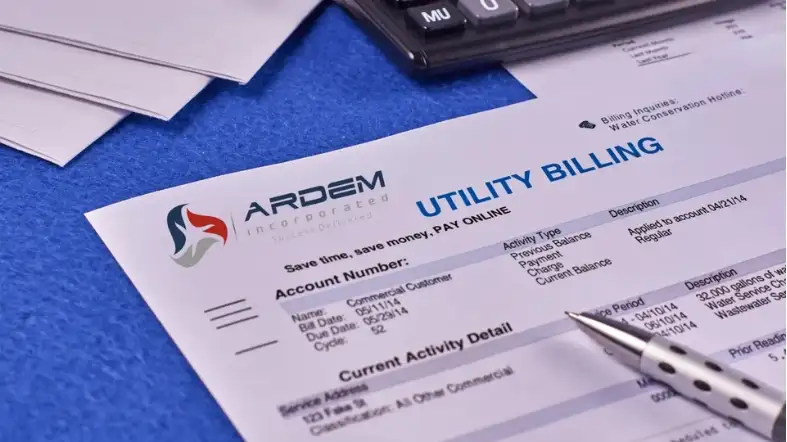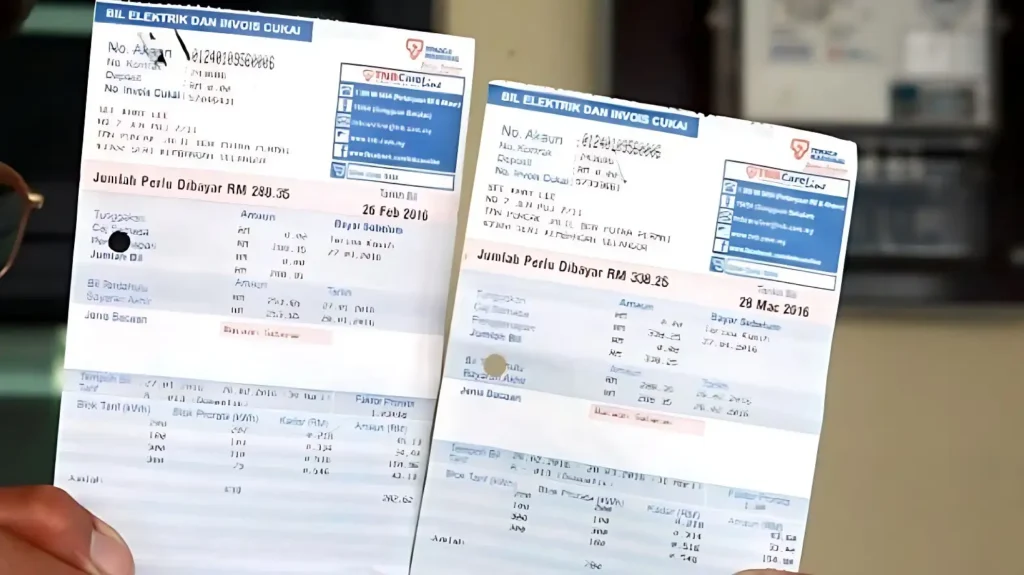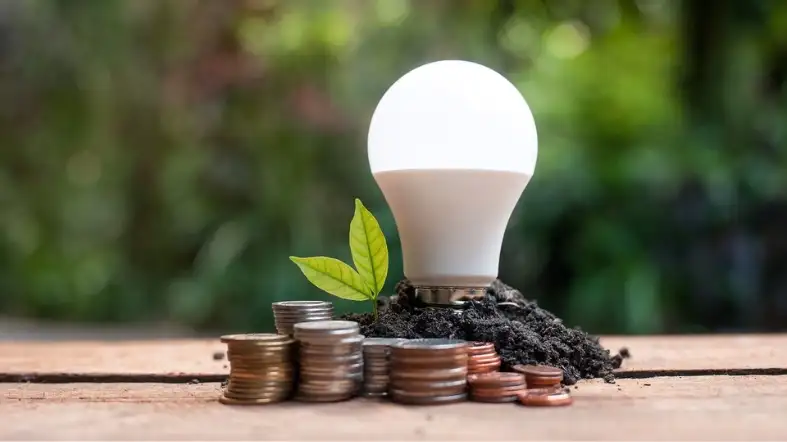In today’s world, energy costs are a significant expense for households and businesses alike.
With the fluctuation of prices, it can be difficult to budget and plan for these costs.
In this blog, we will explore the average cost of electricity and gas per month in different regions, as well as ways to save money on your energy bills.
Whether you’re a homeowner, renter, or small business owner, you’ll find valuable information in our posts.
So, let’s dive in and take a closer look at how much electricity and gas are costing us each month.
How much is electricity and gas per month?
The cost of electricity and gas per month can vary greatly depending on several factors such as location, usage, and the provider.

On average, the cost of electricity can range from $50 to $150 per month, while the cost of gas can range from $20 to $100 per month.
However, it’s important to check with your local utility provider for specific rates and usage estimates in your area.
Factors that affect the cost of electricity and gas
There are a variety of factors that can impact the cost of electricity and gas for consumers.
Some of the main factors include the cost of fuel used to generate electricity and produce gas, government regulations and taxes, and the cost of infrastructure and maintenance for power plants and gas pipelines:
1. Fuel cost:
The cost of the raw materials used to generate electricity and gas, such as coal, natural gas, and nuclear fuel, greatly impacts the cost of electricity and gas.
If the cost of these fuels increases, it will lead to higher prices for consumers.
2. Distribution costs:
The cost of maintaining and upgrading the infrastructure used to deliver electricity and gas to consumers can also affect the cost of these utilities.
This includes costs associated with building and maintaining power lines, pipelines, and other necessary infrastructure.
3. Government regulations:
Governments can also impact the cost of electricity and gas through taxes and regulations.
For example, if a government imposes a carbon tax on emissions from power plants, this can increase the cost of electricity generated from fossil fuels.
4. Competition:
The level of competition in the electricity and gas market can also affect prices.
A market with a high level of competition may lead to lower prices for consumers as companies compete for customers.
5. Weather conditions:
Weather conditions can also affect the cost of electricity and gas.
For example, extreme heat or cold can lead to increased demand for electricity and gas, which can drive up prices.
6. Maintenance and operation costs:
The cost of maintaining and operating power plants and gas facilities also affects the cost of electricity and gas.
If a power plant needs to be shut down for maintenance or repairs, this can lead to higher prices for consumers.
7. Research and development:
Research and development costs can also affect the cost of electricity and gas.
If a company is investing in new technologies to generate electricity or extract gas, this can increase the cost of these utilities.
8. Environmental compliance:
The cost of complying with environmental regulations can also affect the cost of electricity and gas.
For example, if a power plant is required to install equipment to reduce emissions, this can increase the cost of electricity.
9. Geopolitical factors:
Geopolitical factors can also affect the cost of electricity and gas. For example, if a country is dependent on imported oil, this can lead to higher prices for consumers.
10. Energy efficiency and conservation:
The cost of electricity and gas can also be affected by how much energy is being used and how efficiently it is being used.
If people are using less energy, this can lead to lower prices for consumers.
How To Read Your Utility Bill And Understand The Charges?

Reading and understanding your utility bill can be a bit confusing, but it is important to know what you are paying for and how to budget accordingly.
Here are some key components to look for when reading your utility bill:
1. Account Information:
This section will have your account number, account name, and billing period.
Make sure that this information is correct and that you are being billed for the correct address.
2. Usage Information:
This section will show how much energy or water you have used during the billing period.
It will also show the rate you are being charged for each unit of energy or water used.
This section will also show the number of days in the billing period, so you can compare usage from month to month.
3. Tariff Information:
This section will show the different tariffs you are being charged for, such as peak and off-peak rates for energy or fixed and variable charges for water.
It is important to understand the different tariffs and how they affect your bill.
4. Meter Readings:
This section will show the meter readings for the start and end of the billing period. This is important to check as it is used to calculate your usage.
5. Payment Information:
This section will show the total amount due, the due date, and the payment options available.
It is important to pay your bill on time to avoid late fees or disconnection of service.
6. Additional Charges:
This section will show any additional charges, such as late fees or reconnection fees, that have been added to your bill.
By understanding the different components of your utility bill, you will be able to identify any discrepancies and take steps to reduce your usage and costs.
It’s also important to keep an eye on your usage from month to month and to contact your utility provider if you have any questions or concerns.
How To Compare Costs Between Different Utility Providers?

When comparing costs between different utility providers, there are several key factors to consider.
The first step is to gather information on the different providers and their rates.
This information can typically be found on the providers’ websites or by contacting them directly.
One important factor to consider when comparing costs is the type of service being offered.
Different providers may offer different types of services, such as gas, electricity, or water.
It is important to compare the rates for each type of service to ensure that you are getting the best deal.
Another important factor to consider is the rate structure. Some providers may offer a flat rate, while others may offer a variable rate that changes based on usage.
It is important to consider how much you typically use and how this may impact your costs.
You also need to consider is the length of the contract. Some providers may offer a fixed-term contract, while others may offer a month-to-month contract.
It is important to consider how long you plan to be in the area and whether a fixed-term contract is a better option for you.
Don’t forget to include any additional fees, such as installation fees or cancellation fees, and any discounts or promotions that may be available.
Once you have gathered all of this information, it is important to compare the costs and determine which provider offers the best deal for your needs.
It may be helpful to use a comparison tool or spreadsheet to easily compare the costs and features of each provider.
However, cheapest option may not always be the best option. It is important to consider the reputation and customer service of the provider also.
How to reduce the cost of electricity and gas per month?

There are several ways to reduce the cost of electricity and gas per month.
By implementing a combination of these strategies, individuals and families can significantly reduce their monthly energy bills:
1. Energy efficiency:
One of the most effective ways to reduce the cost of electricity and gas per month is by increasing energy efficiency in your home.
This can be achieved by investing in energy-efficient appliances, lighting, and heating and cooling systems.
For example, upgrading to a high-efficiency furnace or air conditioner can significantly lower your energy bills.
2. Insulation:
Another way to reduce the cost of electricity and gas per month is by properly insulating your home.
Insulation helps to keep the heat inside during the winter and the cool air inside during the summer, reducing the need for heating and cooling systems.
This can lead to significant savings on your energy bills.
3. Smart home technology:
Smart home technology, such as smart thermostats and smart power strips, can help you monitor and control your energy usage.
This allows you to identify areas where you can reduce your energy consumption and make adjustments accordingly.
4. Time of use:
Many utility companies offer time-of-use pricing plans, which charge different rates for energy usage depending on the time of day.
By shifting your energy usage to off-peak hours, you can save money on your energy bills.
5. Renewable energy:
Investing in renewable energy sources, such as solar or wind power, can help to reduce your dependence on traditional energy sources and lower your energy bills.
6. Energy audits:
Conducting an energy audit can help you identify areas where you can reduce your energy consumption and make adjustments accordingly.
This can help you save money on your energy bills.
7. Compare rates:
Finally, it is always a good idea to compare rates from different energy providers to ensure that you are getting the best deal.
This can help you find the most affordable energy plan for your home.
FAQs
Q: How Much Does Electricity Cost Per Month On Average?
The cost of electricity per month varies depending on several factors such as location, usage, and the type of rate plan.
On average, households in the United States pay between $100 to $150 per month for electricity.
Q: How Much Does Natural Gas Cost Per Month On Average?
A: The cost of natural gas per month also varies depending on location, usage, and the type of rate plan.
On average, households in the United States pay between $50 to $100 per month for natural gas.
Q: How Can I Reduce My Electricity And Gas Bills?
A: There are several ways to reduce your electricity and gas bills, such as:
Installing energy-efficient appliances
Using energy-efficient light bulbs
Lowering the thermostat during the winter and raising it during the summer
Sealing air leaks in your home to reduce heating and cooling costs
Unplugging electronics and appliances when they are not in use
Considering a time-of-use rate plan to take advantage of off-peak rates
Compare the rates of different energy providers in your area
Q: How Can I Check How Much Electricity And Gas I Am Using?
A: You can check your electricity and gas usage by looking at your bills from your energy provider.
Most providers also have an online portal where you can view your usage history and track your consumption.
Additionally, you can also install a smart meter that can provide you with more detailed usage information.
Q: What Are The Different Types Of Rate Plans For Electricity And Gas?
A: The most common types of rate plans for electricity and gas are:
Flat rate: you pay a fixed rate for the energy you use regardless of the time of day
Time-of-use rate: you pay different rates for energy depending on the time of day, with higher rates during peak hours and lower rates during off-peak hours
Tiered rate: you pay different rates for energy depending on how much you use, with higher rates for higher usage
Net metering: if you generate your own electricity with solar panels or other renewable energy sources, you can earn credits for the excess energy you send back to the grid.
Conclusion
The cost of electricity and gas per month can vary greatly depending on a number of factors such as location, usage, and energy provider.
However, by being mindful of energy consumption, shopping around for the best rates, and taking advantage of any available discounts or promotions, it is possible to keep monthly costs low.
It is also important to stay informed about current rates and regulations in order to make the most informed decisions about your energy consumption.
